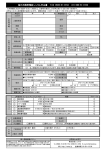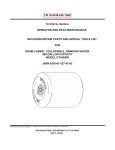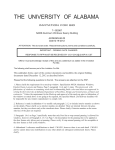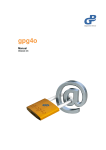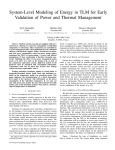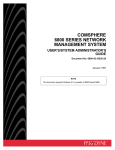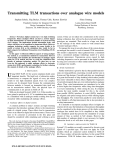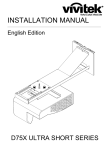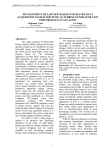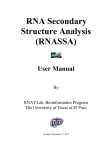Download Functional and Safety Guide for Battery Management System (BMS
Transcript
© C.Dupont/CEA Functional and Safety Guide for Battery Management System (BMS) assessment and certification “BUREAU VERITAS”, and the Bureau Veritas 1828 device are registered trademarks and are owned by BUREAU VERITAS SA. All information provided in the Functional and Safety Guide for Battery Management System (BMS) assessment and certification for the purpose of clarification of BMS safety design and integration in Battery System are protected by copyright and are the property of Bureau Veritas Certification unless otherwise stated. No part of the documents may be reproduced, copied, downloaded or transmitted, in any form and by any means, without the prior written consent of Bureau Veritas Certification. No express or implied licence or right of any kind is granted regarding any information contained in the document, any trademarks or other intellectual property rights of Bureau Veritas Certification or any third party. In no event shall Bureau Veritas Certification, its agents, consultants, and subcontractors, be liable for special, indirect or consequential damages resulting from or arising out of the use of the Functional and Safety Guide for Battery Management System (BMS) assessment and certification, including, without limitation, loss of profit or business interruptions, however these may be caused. Every effort is made to provide general information. However, Bureau Veritas Certification does not guarantee the accuracy, completeness, adequacy or usefulness of the content of the documents, including but not limited to, any information, product, service or process disclosed herein. Bureau Veritas Certification hereby disclaims all warranties and guarantees, whether expressed or implied, including any warranty of merchantability, fitness for a particular purpose or use, or non-infringement of third party rights with respect to the documents provided. Copyright © 2014 Bureau Veritas Certification, All rights reserved. Table of Contents 1. INTRODUCTION 1.1. Purpose 1.2. Scope 1.3. Structure 2. DEFINITIONS AND ACRONYMS 2.1. Definitions 2.1.1. Standard Terms 2.1.2. Verbal forms 2.2. Acronyms 4 8 8 8 8 10 10 10 10 11 3. REFERENCES 3.1. Normative references 3.1.1. IEC 3.1.2. CENELEC 3.1.3. Other standards 3.2. Informative references 14 14 14 14 15 15 4. GENERALITIES 4.1. State of the art of Electric Battery Technologies 4.2. Targeted Battery Applications 4.3. Battery Management System origins and description 18 18 18 19 5. BMS DEVELOPMENT PROJECT - QUALITY MANAGEMENT OF FUNCTIONAL SAFETY 22 6. RECOMMANDATIONS FOR BMS SAFETY LIFECYCLE PRELIMINARY DESIGN PHASES 6.1. Introduction 6.2. Preliminary Safety lifecycle requirements 6.2.1. Hazard and risk analysis 6.2.2. SIL allocation 24 24 25 25 27 Functional and Safety Guide for BMS assessment and certification 7. EXAMPLE OF BMS FUNCTIONAL AND ORGANIC BREAKDOWN 7.1. Introduction 7.2. Standard BMS functions 7.2.1. Safety Function (SF): Protect the Battery Pack 7.2.1.1. SF1: Monitor the Battery Pack State 7.2.1.2. SF2: Estimate the potential need for Battery Pack (dis)connection 7.2.1.3. SF3: Control the Battery Pack (dis)connection 7.2.2. P erformance Function (PF): Optimize Battery life-time and energy availability 7.2.3. Additional Functions (AF) 7.3. Standard BMS operating modes 7.4. Standard BMS architecture 7.5. Safety requirements for BMS hardware/software architecture and design 8. RECOMMANDATIONS FOR BMS DESIGN TESTING AND VALIDATION ACTIVITIES 8.1. Introduction 8.2. General requirements 8.2.1. Configuration of the validation platform 8.2.2. Safety User Manual 8.3. Validation of safety requirements - Abuse test procedures 8.4. Performance and endurance tests 30 30 30 30 30 31 31 32 33 33 34 35 38 38 38 38 38 39 40 Table of Figures FIGURE 1. Secondary Battery Technologies Overview 18 FIGURE 2. Interacting modules of a Battery System - Monitoring BMS 24 FIGURE 3. Interacting modules of a Battery System - Control & Monitoring BMS 25 FIGURE 4. Standard BMS architecture 34 Functional and Safety Guide for BMS assessment and certification 5 1 1.Introduction 1.INTRODUCTION 1.1.Purpose This document gives safety recommendations for Battery Management Systems (BMS) development. Embracing the IEC 61508 safety principles, including E/E/PE system safety lifecycle decomposition, it describes Bureau Veritas Certification guidelines and acceptance criteria at each of the following phases of BMS development: Risk analysis preliminary studies Functional specification and SIL allocation Architecture description Testing and Validation activities This document is applicable to BMS design and validation teams, as well as Battery System integrators and BMS third-party safety assessors. 1.2.Scope This guide applies to the development of generic BMS, as independent as possible from electric battery technology and industrial application. Recommendations related to specific electric battery chemistry and/or specific batterypowered applications are tagged as such. In this guide, the scope delimitation of a generic BMS is mainly driven by functional considerations. As described hereinafter, an elementary BMS shall manage a set of primary safety functions achieving battery protection. Performance functions may be added to the BMS scope, on condition that they have no impact on safety function behaviour. 1.3.Structure Following some introductory chapters (chapters 1 to 4), this document endorses in chapter 5 the IEC 61508 quality notion of “Management of Functional Safety” applied to BMS development projects. In chapter 6, it provides generic guidelines and specific examples for BMS design preliminary phases: risk analysis studies and Safety Integrity Level (SIL) allocation. Then, in chapter 7, the functional and organic breakdown of a generic BMS is considered. Recommendations for BMS testing and validation activities are presented in chapter 8. 8 Functional and Safety Guide for BMS assessment and certification 2 2.Definitions and acronyms 2.DEFINITIONS AND ACRONYMS 2.1.Definitions 2.1.1.Standard Terms Battery Management System (BMS): Electronic system associated with a battery pack which monitors and/or manages in a safe manner its electric and thermal state by controlling its environment, and which provides communication between the battery system and other macro-system controllers (e.g.: Vehicle Management System (VMS) and Energy Management System (EMS)). Battery Support System (BSS): A group of interconnected and interactive parts that perform an essential task as a component of a battery system. NOTE: Such systems are, for example, electrolyte circulation pumps, cooling and heating devices or fire extinguishers. Battery System: Energy storage device that includes cells, cell assemblies or battery pack(s) as well as electrical circuits and electronics (Example of electronics: BMS, BSS, cell electronics). Cell electronics: Electronic device that collects and possibly monitors thermal and electric data of cells or cell assemblies and contains electronics for cell balancing, if necessary, as well as over-current protection devices (e.g. fuse). NOTE: The cell electronics may include a cell controller. The functionality of cell balancing may be managed by the cell controller as part of a modular BMS. Rated capacity: Supplier’s specification of the total amount of Ampere Hours that can be withdrawn from a fully charged battery pack or system for a specified set of test conditions, such as discharge rate, temperature and discharge cut-off voltage. Secondary battery: Rechargeable battery. Known as secondary cells because their electrochemical reactions are electrically reversible. State of charge (SOC): Available capacity in a battery pack or system, used to estimate the current charge level of a battery in use. State of health (SOH): Available capacity in a battery pack or system as a function of the battery lifetime. NOTE: SOC and SOH are expressed as percentages of rated capacity. 2.1.2.Verbal forms Might / may / can: When referring to the Applicant, indicates a possible action. Shall / must: Indicates a mandatory requirement to be followed by the Applicant. Should: Indicates a recommendation or preferred course of action, but does not exclude other possible options which would be examined on a case by case basis. 10 Functional and Safety Guide for BMS assessment and certification 2.2.Acronyms AF Additional Function Ah Ampere hours BCS Battery Charging System BMS Battery Management System CAN Controlled Area Network DSP Digital Signal Processor E/E/PE Electrical/Electronic/Programmable Electronic EMS Energy Management System EV Electric Vehicle GND Ground HEV Hybrid Electric Vehicle HMI Human-Machine Interface LOPA Layer of Protection Analysis PCS Power Conversion System PF Performance Function PFH Probability of Failure on Demand (P-M-C)MU (Pack - Module - Cell) Management Unit SIL Safety Integrity Level SF Safety Function SOC State of Charge SOH State of Health THR Tolerable Hazard Rate UPS Uninterruptible Power Supply VMS Vehicle Management System Wh Watt hours Functional and Safety Guide for BMS assessment and certification 11 3 3.References 3.REFERENCES For the sake of brevity, only the main standards are listed here. The complete certification references mentioned by Bureau Veritas Certification are available upon request. 3.1.Normative references 3.1.1.IEC Designation Title IEC 61508 (Part 1 to 7) - Edition 2.0 Functional safety of electrical/electronic/programmable electronic safety-related systems IEC 61851 (Part 1 – 2010) Electric vehicle conductive charging system – General requirements IEC 61427-2 (Draft 21/825A/CD) Secondary cells and batteries for renewable energy storage – General requirements and methods of test – Part 2: on-grid applications IEC 61850 Communication networks and systems in substations IEC 60950-1 Information technology equipment - Safety - Part 1: General requirements Table I. IEC normative references 3.1.2.CENELEC Designation Title NF EN 50272 (Part 1 – 2010 / 2 – 2005 / 3 – 2003) Safety requirements for secondary batteries and battery installations NF EN 61982 - 2013 Secondary batteries (except lithium) for the propulsion of electric road vehicles – Performance and endurance tests NF EN 62133 - 2013 Secondary cells and batteries containing alkaline or other non-acid electrolytes - Safety requirements for portable sealed secondary cells, and for batteries made from them, for use in portable applications Table II. CENELEC normative references 14 Functional and Safety Guide for BMS assessment and certification 3.1.3.Other standards Designation Title ISO 26262 - 2011 Road vehicles - Functional safety ISO 12405 (Part 1 2011 / 2 - 2012) Electrically propelled road vehicles – Test specification for lithium-ion traction battery packs and systems IEEE Std 1625 - 2008 IEEE Standard for Rechargeable Batteries for Multi-Cell Mobile Computing Devices Table III. Other normative references 3.2.Informative references Designation Type Authors Title 978-3-9810801-8-6/ DATE12/ ©2012 EDAA Publication Publication M. Brandl, H. Gall, M. Wenger, V. Lorentz, M. Giegerich, F. Baronti, G. Fantechi, L. Fanucci, R. Roncella, R. Saletti, S. Saponara, A. Thaler, M. Cifrain, W. Prochazkat “Batteries and Battery Management Systems for Electric Vehicles” W56HZV-11-C-0194– 2012 Journal Article Publication B. Pilvelait, C. H. Rentel, W. Finger, L. Ruckman, D. Fogg, G. L. Plett, M. Marcel “Performance results for a universal lithium ion Battery Management System” 0278-0046/03$17.00 ©2003 IEEE Publication Publication J. Chatzakis, K. Kalaitzakis, “Designing a New N. C. Voulgaris, S. N. Generalized Battery Manias Management System Table IV. Informative references Functional and Safety Guide for BMS assessment and certification 15 4 4.Generalities 4.GENERALITIES 4.1.State of the art of Electric Battery Technologies The figure 1 outlines the primary existing technologies for secondary batteries design. Conventional Batteries • Lead-based Batteries Pb-acid / Pb-C • Nickel-based Batteries NiCd / NiMH Advanced Batteries • Lithium-based Batteries Li-ion / LMP • Sodium-based Batteries High-temperature - Sodium Sulphur (NaS) • Hydrogen Cells / Fuel Cells Flow Batteries • Energy is stored as the electrolyte material • Liquid electrolyte (Vanadium, ZnBr) Supercapacitors Ultracapacitors • Capacitors without conventional solid dielectric • Families depending on electrode design Figure 1. Secondary Battery Technologies Overview NOTE: The safety functions carried out by a BMS are mainly relevant for Advanced Battery operation (especially Lithium-based Batteries), as explained in §4.3. 4.2.Targeted Battery Applications Low-energy applications using miniature or portable batteries (<100 Wh) such as capacitors are considered outwith this guide scope as the concept of safety and fault gravity related to these batteries is questionable. This guide applies to Mid-energy and High-energy Battery applications, such as: atteries for stationary applications (Emergency Power (UPS), Local Energy storage, B Smart Grids…) Batteries for embedded applications (EVs, HEVs, Locomotives, Airplanes…) 18 Functional and Safety Guide for BMS assessment and certification 4.3.Battery Management System origins and description BMS development has stemmed from the emergence of Lithium-based batteries which, unlike conventional Nickel-based batteries, do not tolerate any overvoltage and may require secondary functions to work safely (heating, etc…). Hence, two relevant functions for a Battery Management System were highlighted: Overvoltage Protection, as a safety-related battery protection action Accurate cell balancing, as functionality in the service of energy storage performance optimization Those two particular functions of a BMS symbolize the BMS functional breakdown philosophy adopted in the following chapters: safety functions related to Battery Protection combined with performance functions related to battery lifetime and energy availability optimization. Functional and Safety Guide for BMS assessment and certification 19 5 5.BMS Development project Quality management of functional safety 5.BMS DEVELOPMENT PROJECT QUALITY MANAGEMENT OF FUNCTIONAL SAFETY To properly manage and achieve functional safety of Battery Management Systems, project development teams shall apply the quality requirements of IEC 61508-1 §6. In particular, the following project aspects shall be specified and applied accordingly: Project organization (responsibility sharing, communication, planning) Documentation management Configuration procedures Modification process Requirement management Functional Safety assessment means (periodic audits) 22 Functional and Safety Guide for BMS assessment and certification 6 6.Recommandations for BMS safety lifecycle preliminary design phases 6.RECOMMANDATIONS FOR BMS SAFETY LIFECYCLE PRELIMINARY DESIGN PHASES 6.1.Introduction The two key objectives of this chapter are: o present the generic methodology that BMS design teams shall apply for hazard T analysis and SIL allocation phases. o provide common instances of potential hazards and guidelines regarding SIL T allocation choices for BMS design, although these largely depend on battery features and modes of operation. A decisive prerequisite for the safety preliminary analyses is the clear definition of the BMS functional scope within the overall Battery System. At this point, it is important to distinguish between the two main BMS categories (please refer to §2.2 for acronyms signification): Monitoring systems (figure 2), whose function is to provide valid information and potential alarms about Battery Pack state to the Master Control System (EMS, VMS, etc…). BATTERY SYSTEM HMI EMS BMS BSS Battery Pack Charger (BCS, PCS) Power supply •• •• •• Loads Power contactor Main power Communication link BMS scope Potential communication link Figure 2. Interacting modules of a Battery System - Monitoring BMS 24 Functional and Safety Guide for BMS assessment and certification M onitoring and Control systems (figure 3), which, in addition to the monitoring functions, are in charge of controlling Battery Support Systems (e.g. cooling systems) and power electronics (e.g. power contactors). BATTERY SYSTEM HMI EMS BMS BSS Battery Pack Charger (BCS, PCS) Power supply •• •• •• Loads Power contactor Main power Communication link BMS scope Potential communication link Figure 3. Interacting modules of a Battery System - Control & Monitoring BMS NOTE: The “Charger (BCS)” module can also be considered as part of the Battery System. NOTE II: According to project characteristics and project teams’ choices, Battery Management Systems (BMS) can include one or more of the following modules: BSS / HMI / Charger (BCS). 6.2.Preliminary Safety lifecycle requirements 6.2.1.Hazard and risk analysis Regarding the methodology and techniques applicable for the analyses of battery system hazards and associated risks, BMS design teams shall rely on IEC 61508 specifications (Part 1 §7.4 and Part 5). Prior to hazard identification, safety teams shall agree on the scope of entities which are to be protected by the safety functions of the BMS: persons, nature, equipment (battery lifetime), etc…Then, the hazard analysis shall take into account the following two classes of hazardous events: Functional and Safety Guide for BMS assessment and certification 25 i. Chemical, electrical and environmental hazards coming from Battery System operation The non-exhaustive table below lists potential hazards tied to the Battery System operation: Chemical, electrical and environmental hazards coming from Battery System operation Hazards coming from Battery Pack chemical reactions Emission of combustible, toxic or explosive gases Emission of combustible, toxic or corrosive liquids Thermal runaway Electrolyte creepage Cell fire or explosion Cell overheating Hazards coming from Battery System electrical circuitry Internal short-circuit Loss of internal electrical continuity Excessive internal impedance Massive shorts in power output cabling to the PCS Hazards coming from Battery System environmental conditions Seismic events Fire in immediate vicinity of the battery Sprinkler action, drip-water exposure and flooding Crushing of cells due to rack or building collapse Vandalism and theft Operator errors Table V. Potential Hazards related to Battery System operation 26 Functional and Safety Guide for BMS assessment and certification ii.Hazards coming from the BMS operation within the Battery System The non-exhaustive table below lists typical potential hazards related to the failure of monitoring, control and safety functions within the Battery System. Between brackets are identified modules of BMS which are related to each hazard. Hazard coming from the BMS operation within the Battery System Loss of air conditioning and battery cooling (BSS) Loss of battery heating controls (BSS) Loss of battery voltage control function (BMS / EMS) Over-discharge of cells due to a ground fault or control function loss (BMS/EMS) Overcharge due to control function loss, data drift or software error (BMS/EMS) Overcurrent due to control function loss or shunt calibration error (BMS/EMS) Short-circuit in control and diagnostic cabling on the battery (BMS) Loss of communication between control systems (BMS/EMS) Loss of BMS/BSS functionality Table VI. Potential Hazards related to BMS operation within the Battery System Once the hazard analysis has been carried out on the Battery System, safety teams shall tackle the following two points: Select the hazards which are to be mitigated by BMS action Estimate the risks associated with the above-mentioned hazards, based on their quantified probability and severity This stage primarily depends on project specificities: adopted battery technology, planned mode of operation, environment, etc. That is why it should be carried out in close collaboration between the battery manufacturer, the battery system developer (project and safety teams) and the future integrator/operator. 6.2.2.SIL allocation Safety teams shall follow the standard IEC 61508 (Part 5) requirements concerning the techniques (e.g. quantitative and semi-quantitative methods) and measures to allocate Safety Integrity Levels (SIL) to risks. Risks estimated through preliminary analyses shall be compared with project safety objectives in order to evaluate their tolerable rates of occurrence (THR). These rates determine the SIL attribution to corresponding safety functions. Functional and Safety Guide for BMS assessment and certification 27 The following table is based on IEC 61508 Ed2 and ISO 26262 standards. It defines the correspondence between Safety Integrity Level, Automotive Safety Integrity Level and dangerous failure frequency of the safety function: Safety Integrity Level (SIL) Automotive Safety Integrity Level (ASIL) Average frequency of a dangerous failure of the safety function [h-1] 4 D ≥10-9 to <10-8 3 B and C ≥10-8 to <10-7 2 - ≥10-7 to <10-6 1 - ≥10-6 to <10-5 Table VII. Correspondence between (A)SIL and dangerous failure frequency of the safety function §7.2.1 of the present document lists the typical generic BMS functionalities which require a SIL allocation, in the sense that their failure can lead to a hazardous event in an intolerable probability, as defined in the previous paragraph. It is recommended to develop those safety functions according to a “SILX” (X=1 to 4) as specified in the generic standard IEC 61508 - or an “ASILX” (X=A to D) as specified in the standard ISO 26262 for road vehicle applications. This effort may be sufficient for a “SILX” (respectively “ASILX”) certification of the whole Battery Management System, if the following condition is reached: I ndependence between safety and non-safety BMS function behaviors is proven (refer to IEC 61508 for details about independence evidence, especially Annex F of Part 3). 28 Functional and Safety Guide for BMS assessment and certification 7 7.Example of BMS functional and organic breakdown 7.EXAMPLE OF BMS FUNCTIONAL AND ORGANIC BREAKDOWN 7.1.Introduction This chapter discusses further Battery Management System generic functions, architectures and behaviors. The following considerations are intended for Battery Monitoring and Control Systems as defined in §6.1. NOTE: Generally, Battery Monitoring Systems functions are a subset of Battery Monitoring and Control Systems functions. 7.2.Standard BMS functions 7.2.1.Safety Function (SF): Protect the Battery Pack As introduced in the previous sections, the following paragraph lists BMS functions that shall, unless proven otherwise, be developed according to a SIL process (refer to IEC 61508 for the corresponding normative requirements). Here, safety shall be understood as the protection of persons and assets. Hence, the following functions’ role is to protect the Battery Pack from human and assets-related hazardous events (explosion, electric shock, emission of toxic substances). The functions are presented through a Sensor / Logic / Actuator view (SF1 / SF2 / SF3). 7.2.1.1.SF1: Monitor the Battery Pack State SF1: Monitor the Battery Pack State SF1-1: Measure battery cell and pack Voltage SF1-2: Measure battery cell and pack Temperature (Optional) SF1-3: Measure battery pack Current Flow (Optional) SF1-4: Detect battery system Leakage Currents Table VIII. BMS Functional breakdown - Sub-functions of SF1 SF1-1 & 2 indicate the measurement of Battery voltage and temperature characteristics by BMS sensors, and the transfer of this information to the BMS processor unit. Preliminary safety and design studies (§6.2) shall examine the architecture of BMS sensors (positioning, number, redundancies, etc…) that enables the allocated SIL to be reached. (Optional) SF1-3 indicates the measurement of Battery Pack Current Flow by BMS sensors, and the transfer of this information to the BMS processor unit. It is tagged as “Optional” since over-current protection functions can be handled automatically by electronic components (e.g fuse, circuit breaker) which does not require BMS control. 30 Functional and Safety Guide for BMS assessment and certification (Optional) SF1-4 indicates the measurement of Battery electric insulation resistance, based on the intensity of Battery leakage currents. It is tagged as “Optional” since, on project applications like vehicle traction applications, the risk associated with leakage currents may be either tolerable or mitigated by over-current protection devices. 7.2.1.2.SF2: Estimate the potential need for Battery Pack (dis)connection SF2: Estimate the potential need for Battery Pack (dis)connection SF2-1: Determine battery pack critical state SF2-2: Manage operating modes SF2-3: Receive information from Master Control System (EMS, VMS…) Table IX. BMS Functional breakdown - Sub-functions of SF2 SF2-1 indicates the acquisition of Battery Pack status (at least voltage and temperature), the comparison of these measures with configured critical thresholds and the elaboration of power contactors control in line with threshold exceeding specifications. SF2-2 indicates the management of BMS operating mode (§7.3 of the present document) and the elaboration of power contactors control in line with mode management specifications. SF2-3 indicates the acquisition of Master Unit control data communicated to the BMS. 7.2.1.3.SF3: Control the Battery Pack (dis)connection SF3: Control the Battery Pack (dis)connection SF3-1: Control the (dis)connection of the electric line of charge SF3-2: Control the (dis)connection of the electric line of discharge (Optional) SF3-3: Inform Master Control System (EMS, VMS…) of Battery Pack (dis)connection status (Optional) SF3-4: Inform operator (HMI) of Battery Pack (dis)connection status Table X. BMS Functional breakdown - Sub-functions of SF3 SF3-1 & 2 indicate the transfer of power contactors controls from BMS processor unit to power contactors actuators and the effective action on power contactors. SF3-3 indicates the transfer of Battery System configuration from BMS processor unit to Master unit in case of (dis)connection order. It is tagged as “Optional” since it is safetyrelated only if the BMS is a Monitoring System that cannot control power contactors. SF3-4 indicates the transfer of Battery System configuration from BMS processor unit to operator in case of (dis)connection order. It is tagged as “Optional” since the need for a Battery System operator is project-dependent. Functional and Safety Guide for BMS assessment and certification 31 In addition to the above mentioned safety functions, BMS designing and integrating teams shall estimate, during preliminary safety analyses, if a “Manual Shut-off function” needs to be implemented on the Battery Pack (System). NOTE: If the Battery System includes a Battery Support sub-system BSSx whose function has been identified as safety-related (e.g. fire extinguisher) and if the BMS is in charge of controlling this subsystem, the safety function “Control and Monitor the BSSx” shall be considered as part of the present paragraph. 7.2.2.Performance Function (PF): Optimize Battery life-time and energy availability The following BMS functions role is the real-time regulation of Battery Pack electrical and thermal characteristics, whose long term objectives are the Battery Pack life-time and energy availability optimization. As explained in the previous sections, whether or not “Battery Pack life-time optimization” is a safety issue depends on project features and preliminary hazard analyses. If identified as such, the following functions shall be considered as safety functions of §7.2.1. PF: Optimize Battery life-time and energy availability PF1: Monitor and Control Battery Pack State of Charge (SOC) and State of Health (SOH) PF2: Manage cell balancing PF3: Monitor and Control non-safety Battery Support Systems (BSS) Table XI. BMS Functional breakdown - Sub-functions of PF PF1 indicates the estimation of Battery Pack SOC and SOH using Battery electrical measurements (SF1), and the elaboration of power electronics and/or battery charger and/or load controls to optimize battery charge and discharge. PF2 indicates the control of individual cell (dis)connection to the electric battery line based on cell electrical measurements (SF1) to optimize battery energy capacity. PF3 indicates the monitoring and control of non-safety Battery Support Systems (e.g. battery cooling and heating sub-systems) used for Battery electrical and thermal characteristics regulation. NOTE: The present BMS functional breakdown separates the software function of “Battery Pack state estimation” into two sub-functions: A safety sub-function, hereinabove identified as SF2-1, which determines the Battery critical state. As broached in §7.2.1.2, this function is based on a simple algorithm that compares Battery electrical and thermal measurements with critical thresholds. A non-safety sub-function, identified as PF1, which estimates the Battery State of Charge (SOC) and State of Health (SOH) for Battery performance optimization purpose. It is based on a more complex program, largely depending on Battery technology, application and choice of observer model for SOC and SOH estimator. 32 Functional and Safety Guide for BMS assessment and certification The adoption of the present separation is conditional upon verification of sufficient independence of execution between these two software sub-functions. For more information about the required evidence, refer to Annex F of IEC 61508-3: “Techniques for achieving non-interference between software elements on a single computer”. Designers and safety teams can opt for only one software function to handle all above mentioned actions. However in this case they shall demonstrate that this function as a whole is developed according to a SIL process. 7.2.3.Additional Functions (AF) In addition to the specific BMS functions mentioned in the previous sections, Battery Management Systems can include other functionalities commonly used in control systems developments (e.g. system fault diagnostic, etc...) on condition that their behaviours do not interfere with safety functions. Additional Functions (AF) AF1: Diagnostic - Record Battery life history log Table XII. BMS Functional breakdown - Additional Functions 7.3.Standard BMS operating modes To facilitate the scheduling and the management of BMS processes and tasks, Battery Management Systems shall include a safety function of mode management (SF2-2) handling the following operating modes breakdown: I nitialization mode The basic software and applications shall initialize. The device shall check the integrity of its software and run autotests if necessary. It shall then take into account its different configuration files and the content of the non-volatile memory. onfiguring mode C The configuring mode shall be the mode during which the BMS device is able to receive, check and take into account additional configuration data sent by its main EMS/VMS device (master/slave relation). Normal Operation mode The operation mode offered by the BMS mode management function shall be the mode during which the device is fully operational. It means that no error is detected and that the device is able to execute its Control and Monitoring tasks. NOTE: A further breakdown of the present BMS “Operation mode” should distinguish between “Charge”, “Discharge”, and “Idle” modes. Degraded mode The BMS mode management function shall manage a mode when the BMS device detects either an internal or external failure. If a critical error occurs during Normal Operation mode, the mode management function shall go to Degraded mode. Functional and Safety Guide for BMS assessment and certification 33 Shutdown mode The mode management function shall manage a shutdown during which BMS services shall be stopped. Maintenance/Test mode If it is identified as necessary, the maintenance/test mode offered by the BMS mode management function shall be the mode during which intrusive maintenance operations are authorized and can be executed (to force process variables for example). 7.4.Standard BMS architecture Pack Protection & Charge / Discharge Switching Current Sensing To load or charger V3 Super Cell 3 Fuse Temp 3 ••• Cell 3 Cell 2 Cell 1 V2 Super Cell 2 Temp 2 V1 Super Cell 1 Main Processor Unit Temp 1 Cell Balancer Power Electronics Communication interface Main power line Sensor link Communication link Figure 4. Standard BMS architecture 34 Functional and Safety Guide for BMS assessment and certification GND User interface (HMI) Several BMS architectures have already been commercialized, or are at the development stage. The present document does not aim to reject any of those BMS architecture choices, so long as they respect hardware safety requirements identified during the BMS design preliminary analyses. Nevertheless, figure 4 illustrates the essential organs that should exist in any BMS device: C ell temperature and voltage sensors B attery Pack Current Flow sensor P rocessor Unit P ower contactors C ell electronics C ommunication interface NOTE: BMS “intelligence” can also be distributed in modular BMS architectures (PMU / MMU / CMU, cell electronics). If so, communication means between the different units shall be managed safely. 7.5.Safety requirements for BMS hardware/software architecture and design Please refer to IEC 61508-2 and IEC 61508-3 for specific requirements regarding BMS hardware components architecture and software module design, inherited from system safety requirements. Information technology hardware (e.g. electrical circuits and electronics) design and architecture should respect the safety requirements of IEC 60950-1, particularly concerning the reduction of the following risks: Electric shock Energy related hazards Fire Heat related hazards Mechanical hazards Radiation Chemical hazards With regards to the compatibility and safety of communication protocols between Battery System internal and external controllers, designers should refer to IEC 61850 requirements. Finally, BMS developers should consult the standard IEC/TS 61000-1-2 regarding the issue of electromagnetic compatibility. Functional and Safety Guide for BMS assessment and certification 35 © C.Dupont/CEA 8 8.Recommandations for BMS design testing and validation activities 8.RECOMMANDATIONS FOR BMS DESIGN TESTING AND VALIDATION ACTIVITIES 8.1.Introduction This final section provides recommendations and guidelines for Battery Management System design testing and validation activities. Again, the chosen SIL-dependent validation methodology and techniques shall be in accordance with the IEC 61508 requirements. Here, it is assumed that the Battery Pack has already been validated at the battery manufacturer level (especially regarding resistance to mechanical shocks and protection against short-circuits and over-current between cells). BMS development teams shall have access to the battery manufacturer specifications, validation procedures and reports. 8.2.General requirements 8.2.1.Configuration of the validation platform Compatibility between all the systems implied (e.g. BMS, EMS/VMS, laboratory’s testing ground, test-bench) must be checked before testing. The battery system shall enable the tests run, i.e. via specified test modes implemented in the BMS, and shall be communicable with the test bench via common communication buses. The battery system shall be controlled by the BMS. The test bench equipment shall follow the operational limits provided by the BMS via bus communication. The test bench equipment shall maintain the on/off requirements for the main contactors and the voltage, current and temperature profiles according to the requirements of the given test procedure. The Battery Support Systems shall be operational according to the controls by the BMS, unless otherwise specified in the test procedure. If an external power source provides energy to the BMS, this energy must be recorded and declared. 8.2.2.Safety User Manual To ensure a safe integration and operation by end-users, a safety user manual gathering all the BMS safety exported constraints shall accompany the delivery of the validated BMS. This manual shall contain: A functional specification of the functions capable of being performed Identification of the hardware and/or software configuration of the validated BMS Constraints on the use of the BMS Assumptions surrounding the analyses of the behaviour or failure rates of the BMS 38 Functional and Safety Guide for BMS assessment and certification In particular, the definition (scope of tests, frequency) of required BMS proof tests and other maintenance activities shall appear in this document. For a complete description of the required content of a Safety User Manual, please refer to standard IEC 61508 (Part 2 and 3 Annex D). 8.3.Validation of safety requirements - Abuse test procedures After each test, the Battery Pack shall be observed until it is considered safe to handle. Data sampling, especially for Battery Pack voltage and current, shall be performed using an adequate sampling rate (e.g. 0,1ms for evaluation of the current shut-off function and the real short-circuit current peak). The behaviour of the Battery Management System shall be fully validated regarding the following non-exhaustive abuse test procedures: Overcharge / Over discharge The test shall be performed with integrated passive circuit protection devices operational. BMS active charge control function shall be inhibited. The BMS shall interrupt the overcharge / over discharge current by an automatic disconnect of the main contactors. Cell Over-heating The test shall be performed with an inhibited Battery Pack cooling control function. The test objective is to validate the BMS functionality of cell over-heating protection with the disconnection of power contactors and the potential start-up of safety Battery Support Systems (e.g. fire extinguisher). Loss of BSS / BMS safety function The purpose of this test is to ensure that any BMS safety function failure (e.g freezed sensor value) is detected within a controllable period of time and that the outputs of the degraded BMS place the Battery System in a safe state. Loss of communication with Master Control System The purpose of this test is to ensure that any lost or corrupted information from Master Control System communication is detected within a controllable period of time and that the outputs of the degraded BMS place the Battery System in a safe state. Corruption of safety-related software The test aims to confirm that BMS autotests detect the introduction of corrupted data within safety-related software and configuration files and that the mode management function places the Battery System in a safe state. (Optional) Short-circuit / Over-current The purpose of the short-circuit / over-current protection test is to check the functionality of the overcurrent protection device (e.g. fuse) and/or automatic disconnect by the main contactors. The BMS shall interrupt the over-current. Measures of insulation resistance between the Battery Pack case and the positive and negative terminals can be carried out before and after the test. Functional and Safety Guide for BMS assessment and certification 39 8.4.Performance and endurance tests The three main test categories for estimating Battery System performance are energy tests, power tests and lifetime tests. Although BMS performance requirements largely depend on Battery technologies and Battery System applications, the following non-exhaustive table lists typical BMS performance tests required by Battery System integrators: Typical BMS performance tests Energy and capacity at different temperatures and discharge rates Power and internal resistance No-load SOC loss SOC loss at storage Cranking power at high temperature Energy efficiency Cycle life Table XIII. Typical BMS performance and endurance tests For more information about application-specific Battery system performance required tests, please refer to: Traction Batteries for Electric Vehicle application - Li-ion technology: ISO 12405 / IEC 62660 - Other: NF EN 61982 Batteries for Renewable Energy storage on-grid application: IEC 61427-2 Ed 1.0 40 Functional and Safety Guide for BMS assessment and certification This technical guide was developed by experts in the Bureau Veritas functional safety team responsible for the IEC 61508 certification, in coordination with CEA and LCIE. © - Copyright Bureau Veritas Certification, Photos: C.Dupont/CEA, Shutterstock - All rights reserved | BMS_V0 001 2014 Bureau Veritas Certification France Battery Management System Assessment & Certification 60, avenue du Général de Gaulle 92046 Paris La Défense cedex [email protected] www.bureauveritas.fr LCIE Bureau Veritas Batteries Verification & Testing 33, avenue du Général Leclerc 92260 Fontenay-aux-Roses [email protected] www.lcie.fr










































